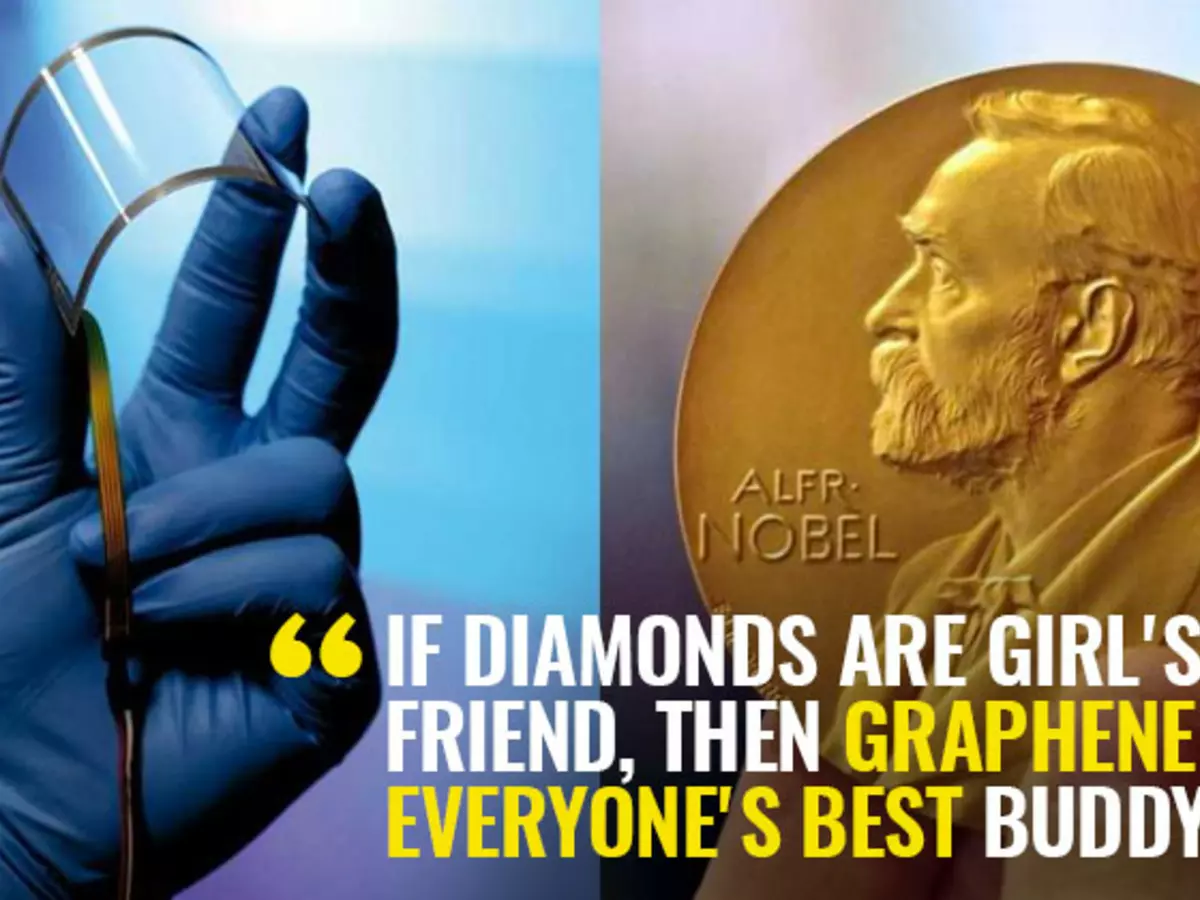This Is How Scotch Tape, A Couple Of Geniuses And A Little Luck Led To A Noble Prize In Physics

¡°Diamonds are a girl's best friend¡±, claimed Marilyn Monroe, but Graphene is certainly everyone's best buddy. Both owe their wonderful genes to their parent, Carbon. Carbon is the black soot like thing you see every morning when you burn your toast. Not to mention it is the backbone of everything organic. There are now many more novel materials, like Carbyne for instance that owe their basic talents to Carbon. But we will stick to Graphene, in this article, for having taken over the scientific world with its sheer simplicity.

emaze
So what's special about Graphene?
Let's begin with a relatable introduction. You must have used a pencil in your lifetime. And you must have had episodes of rage and frustration when the soft black ¡°lead¡± of the pencil broke at a crucial literary moment. Well, here's the scoop ¨C that's not actually lead. It is again one of those Carbon babies ¨C Graphite. Graphite is soft and easily breakable. And Graphene is, essentially, Graphite on a diet. That is, if you were to take the Graphite structure down to just one atom thick, you would get Graphene, a 2D structure of carbon atoms, that looks like a honeycomb.
And this honeycomb like 2D structure is incredibly handy. Why? Well, here are some reasons.
-This lanky carbon sheet is 200 times stronger than steel, tougher than diamond.
- It is extremely bendy and flexible, like rubber.
- It's mutant like powers are only matched by its high electrical conductivity, even higher than copper.
- It is transparent, like glass.
- It conducts heat very well.
- And it is really quite light as you might expect anything an atom thick to be.

fastcodedesign
In other words, if Graphene was one of the X-Men, it would have Professor's telepathic powers, Mystique's shape shifting capabilities, Magneto's magnetic charming senses and Wolverine's adamantium skeleton.
And all that power has a lot of implication in the world of technology and science, taking its usefulness far beyond the research labs onto the industry floor. Graphene brings with it the potential to create highly efficient electrical conductors. Its low electrical resistance promises extremely low power losses, something anyone with an electronic gadget, needing repeated charging, can appreciate. Owing to the same badge of honour of the most conductive man-made substance, it can be the next replacement for Silicon in extremely efficient, light and fast transistors. Its transparency, combined with its electronic properties, makes it a great candidate for touch screens. It is light weight and with a structure that can be designed to filter out water and oxygen. Oxygen and water are the culprits that cause perishable foods to go bad.
Being the way it is, 2D with all atoms exposed to the environment, it can act as an excellent sensor in detecting what's happening around its atoms. And recently MIT has come up with this incredible process to reduce the cost of making devices, on wafers, in the semiconductor industry. This process uses Graphene's unique slippery characteristic of easy peelability to help grow devices on Silicon wafers with a layer of Graphene, in between. Once done, one can simply peel the wafer away. Why? Well, one Silicon wafer can be used multiple times taking the cost of production down multiple times as well. Consequently, electronic devices may just become cheaper! Ain't that a blessing?

Graphite to Graphene by the Scotch Tape Technique/Rakhi Acharyya
The list carries on endlessly. The point is to understand that this extremely cheap man-made marvel has way more potential than the next celebrity offspring about to make a debut performance.
So how was this man-made marvel made?

Andre Geim and Kostya Novoselov/Britannica
The history of Graphene has witnessed over a century worth of failed attempts to extract it from Graphite. It took a rather unconventional experiment by two University of Manchester scientists, Andre Geim and Kostya Novosolev, for the world to finally see it for real.
Andre and Kostya would often get together, on Friday nights, to try out some weird science. On one of those Fridays, in 2004, they tried their hand at the age-old Graphite extraction problem. Instead of using sophisticated equipment, they simply chose sticky tape, peeling it from a lump of Graphite. In a freakishly serendipitous moment, they were able to revolutionise the future of technology. In some of the left over material, stuck on the tapes, they were able to achieve the elusive single layer of Graphite ¨C aka Graphene!
The process, known as the micromechanical cleavage, or the even better Scotch Tape technique, garnered Andre and Kostya the prestigious Nobel Prize in Physics in 2010. On a side note, the same scientist, Andre Geim, had earlier received the Ignoble Prize, the parody of a Noble Prize, for trying to magnetically levitate a frog! Perhaps another Friday night tomfoolery!
From Sci-fi to reality
Graphene and its medleys with other materials have spurred a major research field in Physics, bending our perception of new-age technology, much like itself. It is not just another big thing on campus, but the step towards a new way of life where devices will be cheap enough, efficient enough, and light weight enough that we can even wear them! With more industry applications stirring up the grey cells of scientists worldwide, what began as an out-of-the-box experiment, has now become an active field of research.
Graphene is a testament to human ingenuity, from floating frogs to who knows, perhaps flying pigs!








